
Dives into the world of Colorlight LED controllers, exploring how they work, why they dominate the market, and how to pick the right model for your project.
1. Introduction
1.1 What Makes Colorlight a Leader?
Founded in China and now a global powerhouse, Colorlight LED specializes in LED control systems that blend innovation with rugged reliability. Their products are engineered to handle the most demanding environments, from scorching outdoor stadiums to humidity-controlled studios. Unlike generic controllers, Colorlight LED control system is tailored for scalability, supporting everything from small digital signs to sprawling 8K video walls.
1.2 Why LED Controllers Matter
LED controllers act as the “brain” of any display setup. They process video signals, distribute data to LED panels, and ensure every pixel lights up correctly. Without a high-quality controller, even the most advanced LED panels risk issues like:
- Signal delays: Causing out-of-sync audio/video.
- Pixel errors: Dead spots or color mismatches.
- System crashes: Blackouts during live events.
Colorlight solves these problems with military-grade hardware and intelligent software. For example, their S20 transmitter supports dual-device redundancy, while the E320 receiver card uses loop backup technology to prevent downtime.
2. Key Features of Colorlight LED Controllers
Colorlight’s controllers are built to tackle the toughest challenges in LED display management. Here’s what sets them apart:
(1) Crystal-Clear 4K Resolution & Pixel Precision
- 4K Video Input: Flagship models like the Colorlight S20 transmitter support 4096×2160@60Hz signals.
- Massive Pixel Capacity: The S20 can drive displays up to 8.85 million pixels, making it ideal for stadiums or concert stages.
- Low-Brightness Optimization: Maintains color accuracy even in dimly lit environments (e.g., theaters or museums).
(2) Military-Grade Reliability
- Dual Backup Systems: The S20 allows two controllers to work in tandem, instantly switching if one fails.
- Loop Backup Technology: Receiver cards like the E320 use dual Ethernet ports to create fail-safe data pathways, eliminating screen blackouts.
(3) Professional Calibration Tools
- CCM6000: This scientific-grade tool measures brightness and color uniformity with ±0.0005 precision, erasing patchy or uneven visuals.
- Real-Time Adjustments: Tweak gamma curves, brightness, or color temperature on the fly via USB or RS232 controls.
(4) Versatile Connectivity
- Hybrid Inputs/Outputs: Switch seamlessly between HDMI 2.0, DP 1.2, and DVI signals (S20/S6F).
- Fiber Optic Support: The H10FN converter extends signal transmission up to 20km using single-mode fiber—perfect for sprawling venues like airports.
3. Top Colorlight LED Control System Models
Colorlight’s product lineup is designed to meet diverse needs—from compact installations to industrial-scale displays. Below, we break down their flagship models across four categories: transmitters, receiver cards, accessories, and calibration systems.
Colorlight LED control systems are engineered to deliver precision, reliability, and scalability. Below, we focus on their flagship models to help you understand which solution fits your needs.
3.1 Senders
Senders act as the central hub, converting video inputs into signals for LED displays.
(1) Colorlight S20/S20F
Key Features:
- 4K Video Input: Supports 4096×2160@60Hz via HDMI 2.0 and DP 1.2, ideal for ultra-high-definition content.
- Massive Pixel Capacity: Drives up to 8.85 million pixels, enabling seamless displays up to 8192 pixels wide or tall.
- Dual Redundancy: Two S20 units can work in tandem—if one fails, the backup takes over instantly.
- 20 Gigabit Ethernet Ports: Distribute signals across large installations (e.g., stadiums or concert stages).
Unique Advantage: Built-in audio extraction for synchronized sound output.
Best For: Mission-critical environments like live broadcasts or outdoor mega-screens.
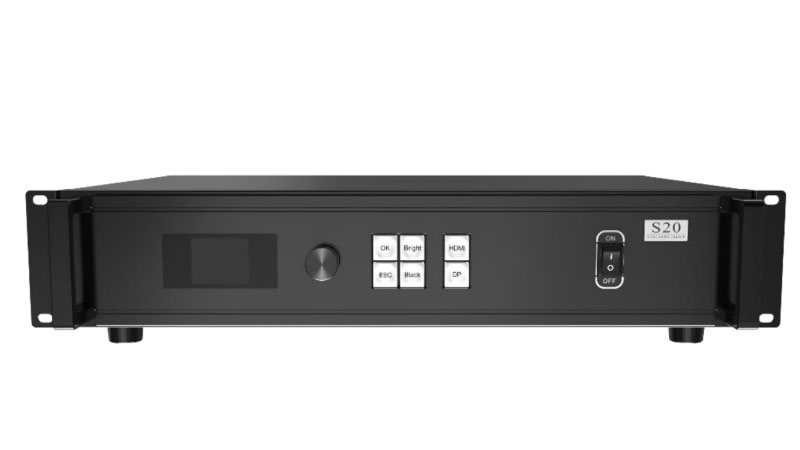
(2) Colorlight S6F/S54/S2
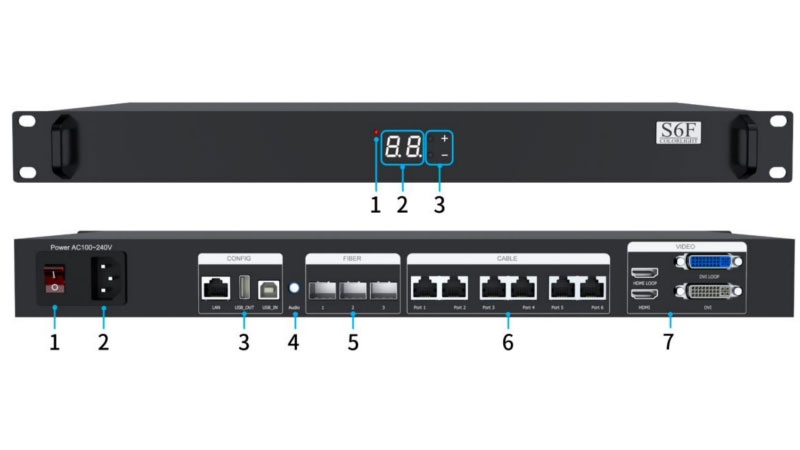
Key Features:
- Hybrid Outputs: Combines 6 Ethernet ports and 3 fiber optic outputs (S6F) for flexible signal routing.
- High Resolution: Supports up to 4096×1536 pixels, perfect for curved or irregular screens.
- USB Control: Use USB 2.0 ports for firmware updates or multi-device synchronization.
Unique Advantage: Compact 1U chassis design saves rack space.
Best For: Mid-sized projects like shopping mall displays or control rooms.
3.2 Receiver Cards: Precision at the Module Level
Receiver cards decode signals and control individual LED panels.
(1) E320Pro/E320
Key Features:
- High Pixel Density: Controls up to 256×1024 pixels per card, ideal for detailed visuals.
- 240Hz Refresh Rate: Eliminates motion blur in fast-paced content (sports, gaming).
- Loop Backup: Dual Ethernet ports ensure uninterrupted data flow if one connection fails.
- HUB75 Integration: Directly connects to LED panels without additional converters.
Unique Advantage: Supports 7×24-hour operation for non-stop displays.
Best For: Budget-conscious setups requiring reliability (retail signage, stage backdrops).
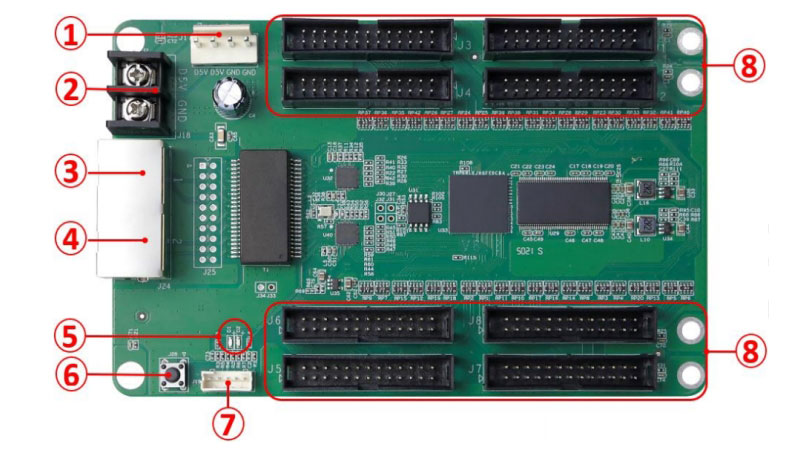
(2) 5A-75E/5A-75B
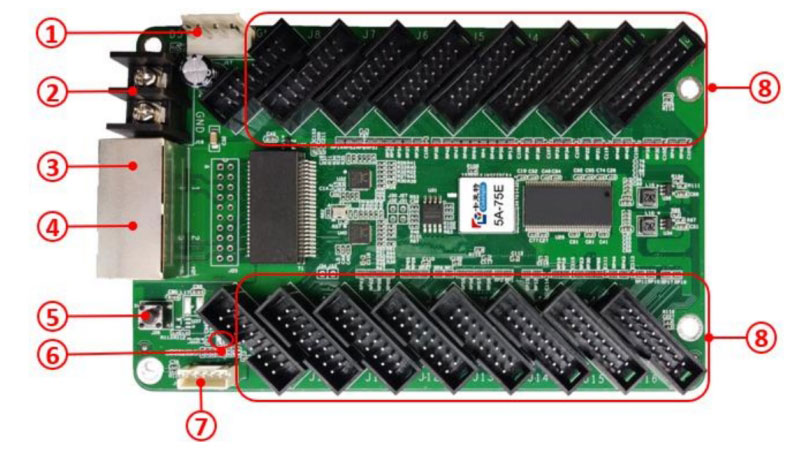
Key Features:
- Cost-Effective Design: Integrated HUB75B interface reduces the need for external hardware.
- Plug-and-Play Setup: Simplifies installation for small to medium screens.
- Wide Compatibility: Works with most standard LED modules.
Unique Advantage: Colorlight 5A Series is Lightweight (94g) and compact for easy retrofitting.
Best For: Fixed installations like conference room displays or digital menu boards.
3.3 Accessories: Extending Functionality
H10FN/H10FN2 Fiber Converters
Key Features:
- Long-Distance Transmission: Supports up to 20km with single-mode fiber modules.
- 10Gbps Speed: Handles high-bandwidth video signals without lag.
- Hot-Swappable Modules: Replace fiber modules without shutting down the system.
Unique Advantage: Compatible with Neutrik opticalCON connectors for rugged environments.
Best For: Large venues like airports or theme parks requiring long-range signal distribution.
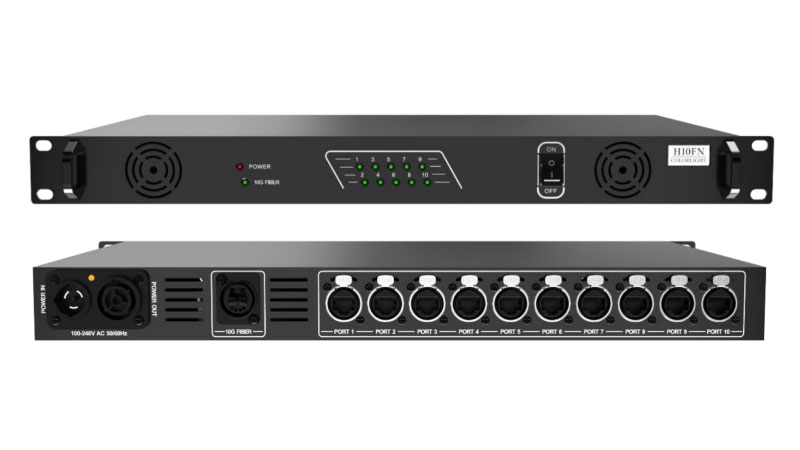
3.4 Calibration & Software: Perfecting Visuals
(1) Scientific-Grade Calibration System (CCM6000)
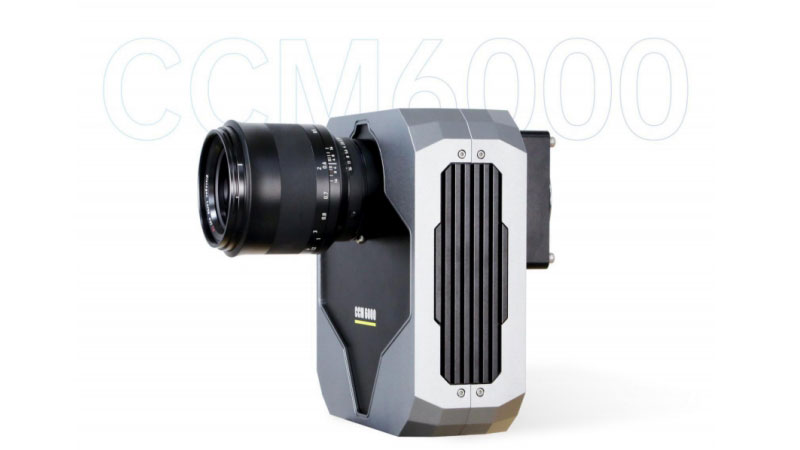
Key Features:
- Ultra-High Resolution: 60-megapixel sensor captures every LED’s brightness and color data.
- Lab-Grade Accuracy: Measures brightness (±1%) and chromaticity (±0.003 xy) for uniformity.
- Active Cooling: Maintains stable temperatures (±0.1℃) during calibration.
Unique Advantage: Works with COB, Mini LED, and traditional SMD screens.
Best For: High-end displays where color consistency is critical (broadcast studios, luxury retail).
(2) LEDVISION Professional Screen Mapping Software
Key Features:
- Drag-and-Drop Layouts: Design screens in any shape (curved, cylindrical, or irregular).
- Real-Time Adjustments: Tune brightness, gamma, and color temperature on the fly.
- Firmware Management: Update multiple devices simultaneously via network.
Unique Advantage: Simplifies complex projects like multi-screen installations.
Best For: AV integrators and creative designers.
4. Applications of Color Light Controller
A. Live Events & Concerts
Colorlight controllers power immersive stage backdrops. For example, the Colorlight S20’s 8K pixel capacity can prrovide seamless visuals even on curved screens.
B. Sports Stadiums
Dual backup systems keep scoreboards and replays running flawlessly during critical moments.
C. Retail & Advertising
Colorlight Z6 Super Controller’s hybrid outputs allow creative window displays with synchronized audio.
D. Broadcast Studios
Real-time 4K processing can make sure crisp feeds for news tickers and virtual sets.
5. How to Choose the Right Colorlight LED Controller
Step 1: Assess Your Screen Size
Small screens (e.g., store signage): E320 receiver cards.
Large screens (e.g., stadiums): S20 transmitter.
Step 2: Evaluate Environmental Needs
Outdoor setups: Pick models with wide temperature ranges (-20℃~70℃).
Long-distance wiring: Use H10FN fiber converters.
Step 3: Prioritize Redundancy
For mission-critical displays (e.g., stock exchanges), opt for dual-backup systems.
Step 4: Budget Considerations
Entry-level: E320 (~$200).
Premium: S20 + CCM6000 calibration kit (~$5,000).
If you have any questions, please contact LedInCloud – a leading LED Screen Cloud Platform and we will have a professional team to help you make the best decision.
6. FAQs
Are Colorlight LED control systems compatible with non-LED displays?
They’re optimized for LED but work with LCD/OLED via HDMI converters. For example:
- Use the S6F controller’s HDMI input to connect a laptop or media player.
- Pair the H10FN fiber converter with HDMI-to-fiber adapters for long-distance LCD setups.
How far can signals travel with Colorlight systems?
Ethernet: Up to 100m with Cat6 cables (E320/S6F).
Fiber: Up to 20km using the H10FN converter and single-mode fiber modules.
Do I need professional calibration tools like the CCM6000?
It depends:
- For basic setups: Use built-in software (LEDVision) for quick adjustments.
- For high-end displays (e.g., broadcast studios, luxury retail): The CCM6000 ensures pixel-perfect uniformity, especially with COB or Mini LED panels.
